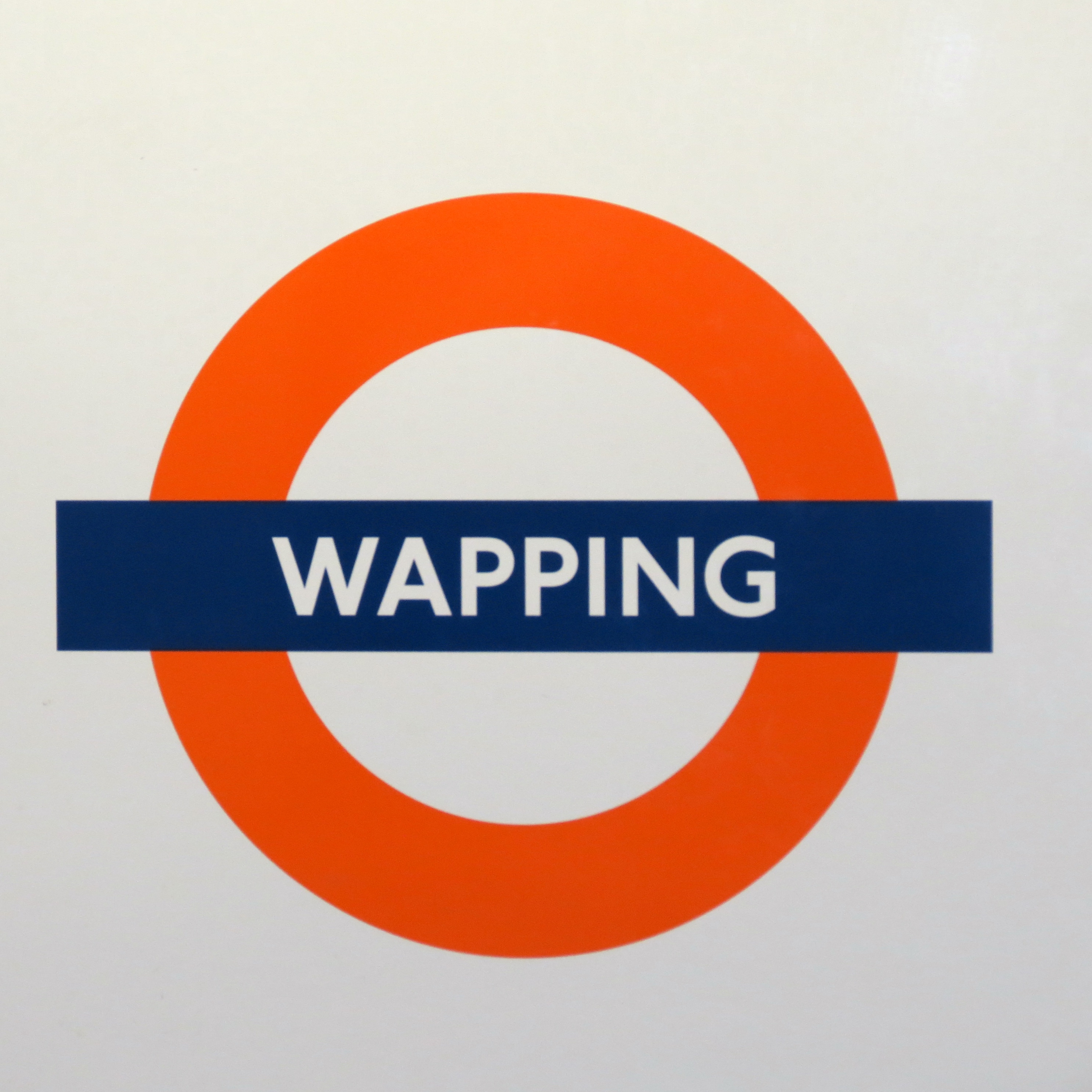
After a day in the City I decided to take Sue, to re-visit
Wapping Underground Stn. (how romantic I hear you say!)
a vital link in my epic trips across London as a teenager
on Fridays night to the “Prospect of Whitby”.
Metro from Latimer Rd to Whitechapel, then a train change
and time shift onto, the East London Line, to Wapping,
an ascent in a rickety wooden lift, then a walk
along the deserted warehouse lined cobbled
Wapping High Street to the pub.
In the 60’s the Wapping underground station was run down, the trains were the
oldest on the system and the sound of the Thames leaking
profusely into the tunnel was incredibly Spooky.
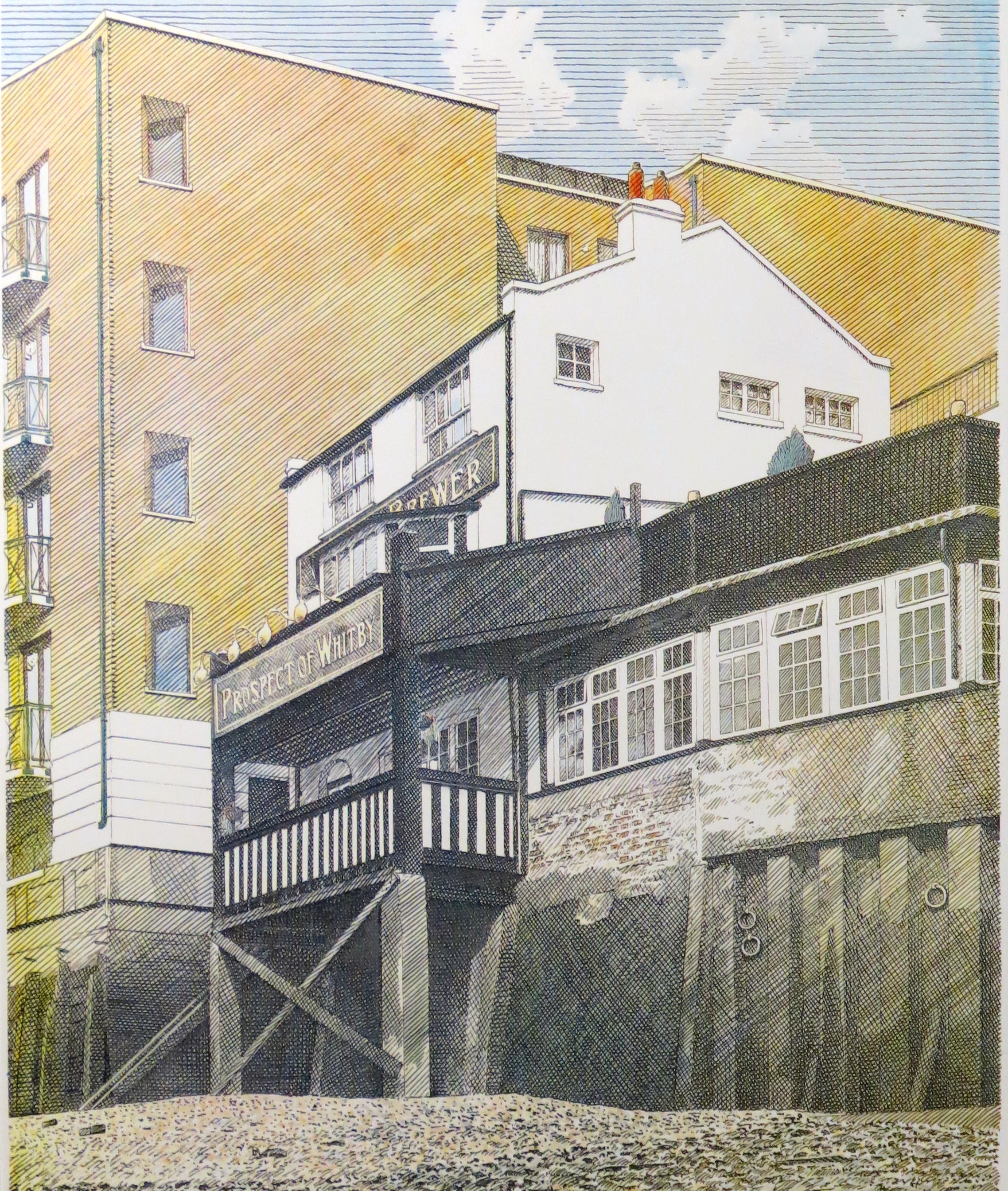 “The Prospect”
“The Prospect”
As a youngster I once also visited by rowing boat for a pint
whilst waiting to lock through into the adjacent Shadwell
Basin of the London Docks, behind a big freighter.

The pub had York Stone paving and a lead or zinc lined bar top.
Dockers below stairs, with a posh merchants restaurant above.
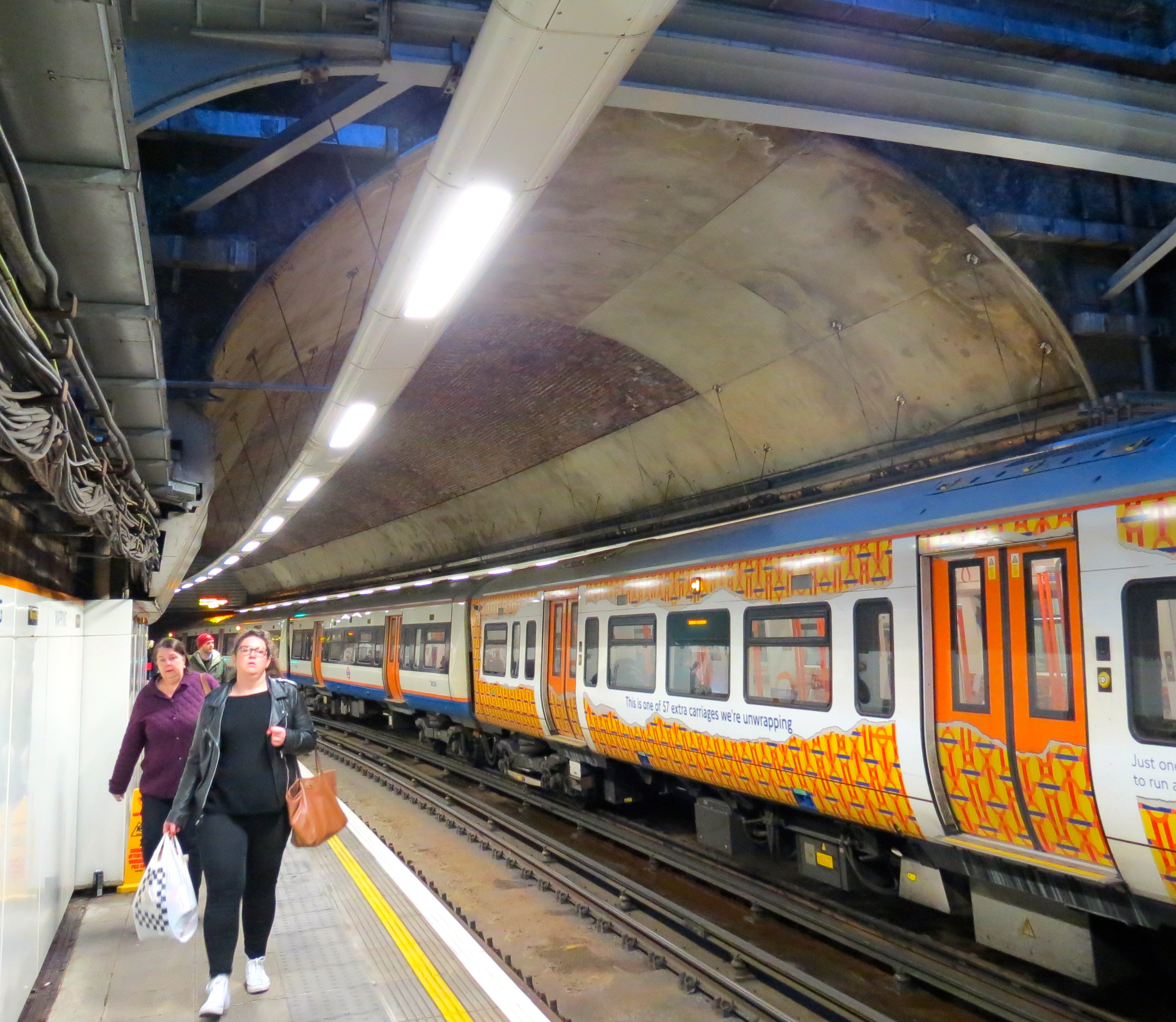
Now part of the TfL London Overground, the Wapping underground station gleams
in its new corporatised enamel linings which depict historic
vignettes of the tunnel and the area. Note the roof.

The main bore was cleaned of 100 years worth of soot,
repointed and then sealed with a concrete lining,
but the brickwork in the station was left original and unlined.
It is interesting to note that along with the ups and downs
how the 3/4 bond brickwork has slipped into a stack bond
for two courses. The Victorians were not always perfect.
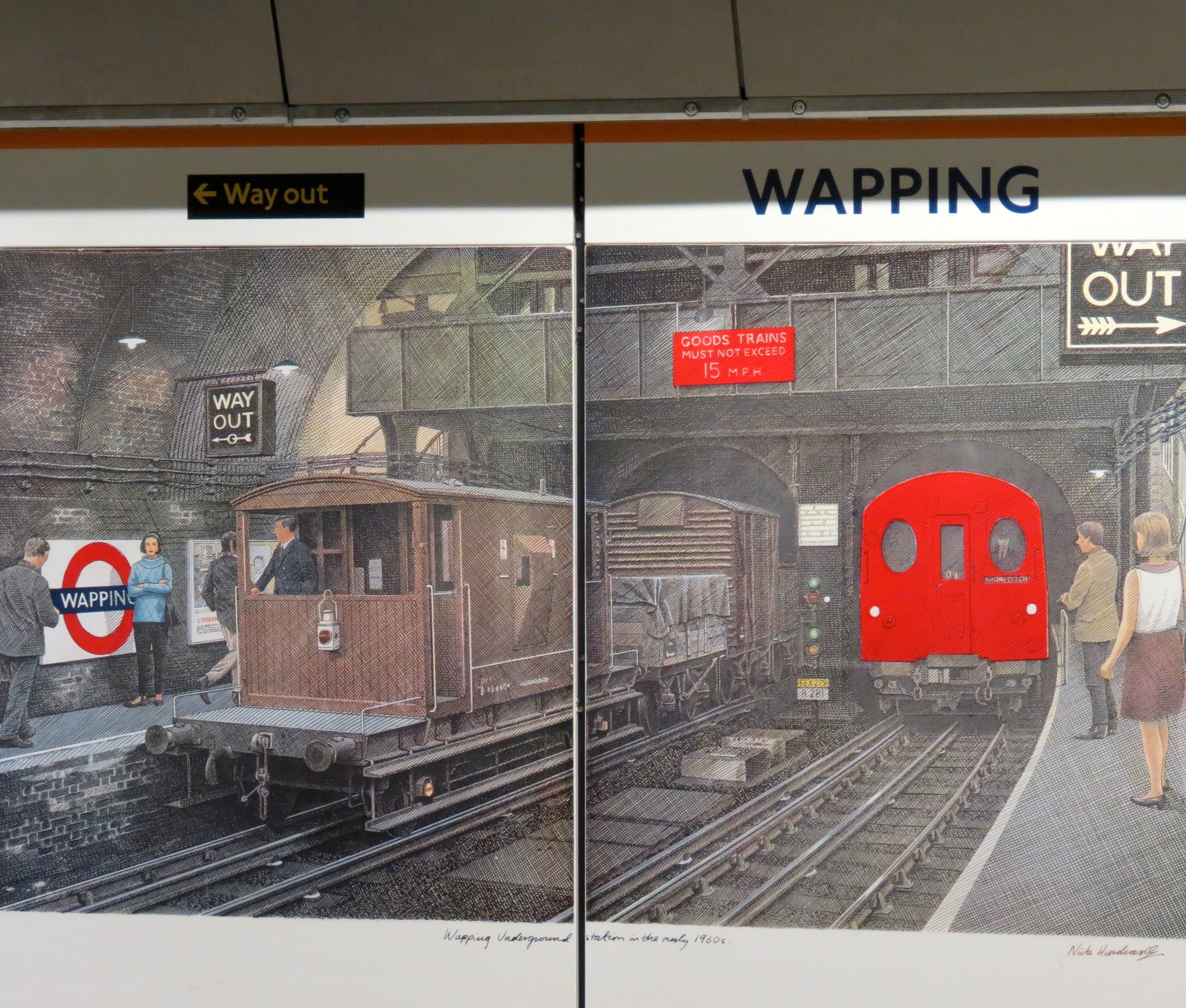
The Brunel tunnel was shared between the electric underground
and steam hauled goods trains until the end of the steam age.
The appearance of a late night goods train, could be
something of a surprise to underground passengers.
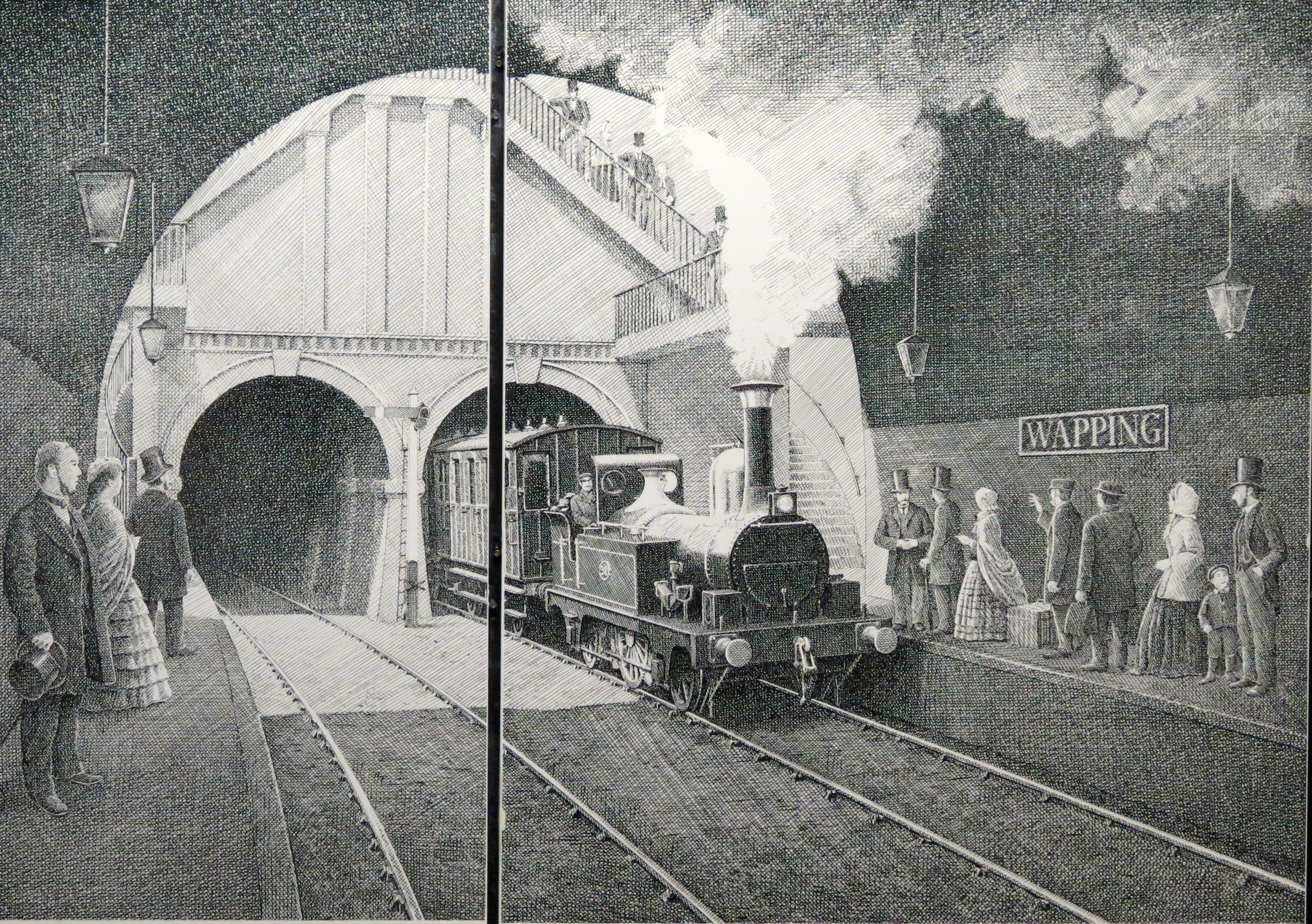
Commenced in 1825 Mark Bunels’ tunnel was originally
sponsored by the Duke of Wellington among others and
built as a road tunnel, but the company ran out of money,
so it was sold to the Metropolitan Railway Co,
who initially ran Broad gauge trains.
IKB took over as engineer at the age of 19 and his son
Henry was the first person to pass under the river.
The full story of the worlds first underwater underground
railway is fascinating and I would command all to
discover all about its many ups & downs.

This well known image depicts the tunnels life as a Foot Tunnel.
Stalls were also built between the arches and at one time it
was a Shopping Centre of great repute.
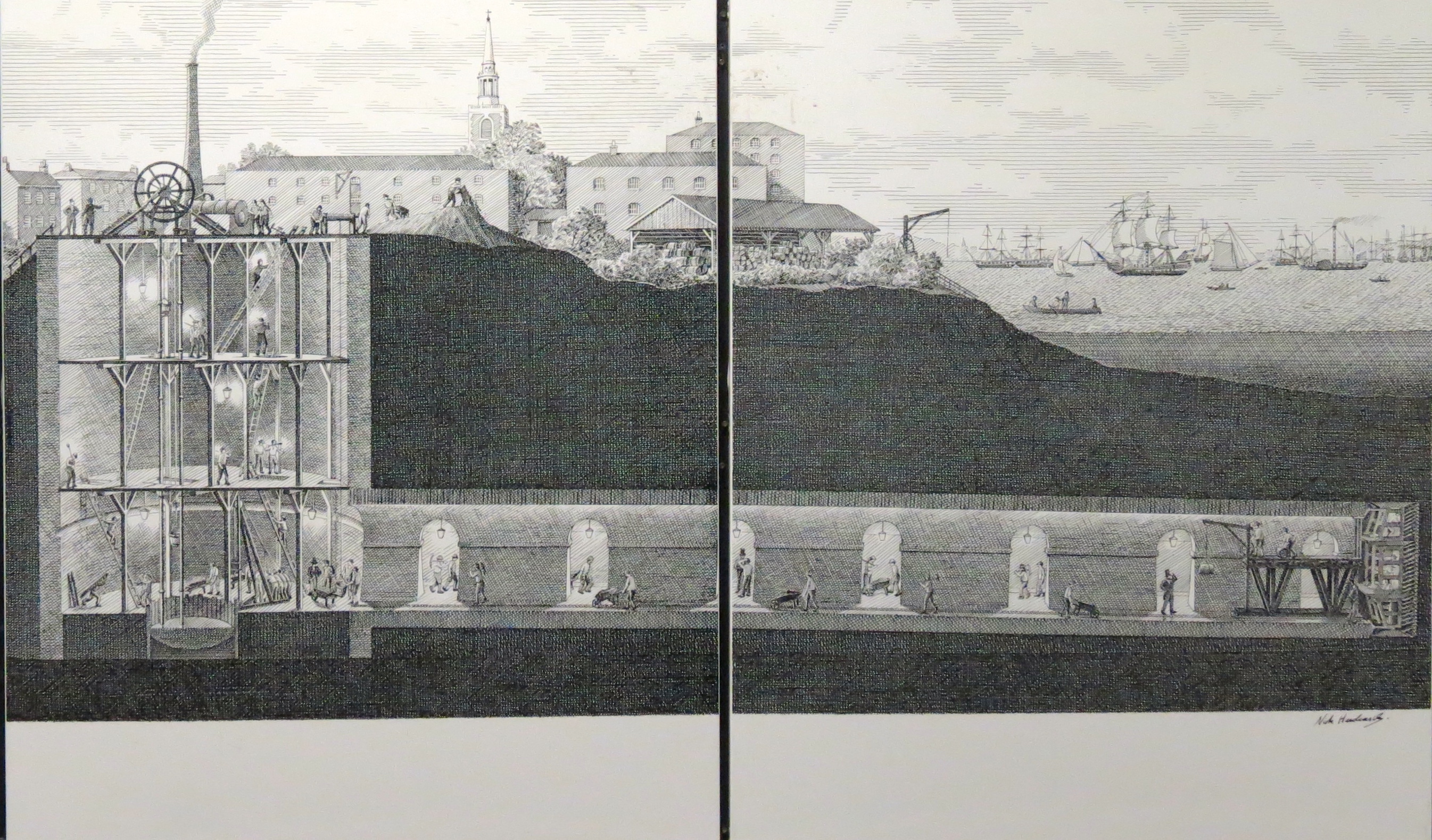 This vignette depicts the ventilation/access shaft at one end and the Mark Brunel’s tunnelling shield at the other; the shield made it all possible.
This vignette depicts the ventilation/access shaft at one end and the Mark Brunel’s tunnelling shield at the other; the shield made it all possible.
All the professional advice of the day was to dig deep under the river.
Mark Brunel dug through the mud just 15ft below the river bed.

Working Days on The River
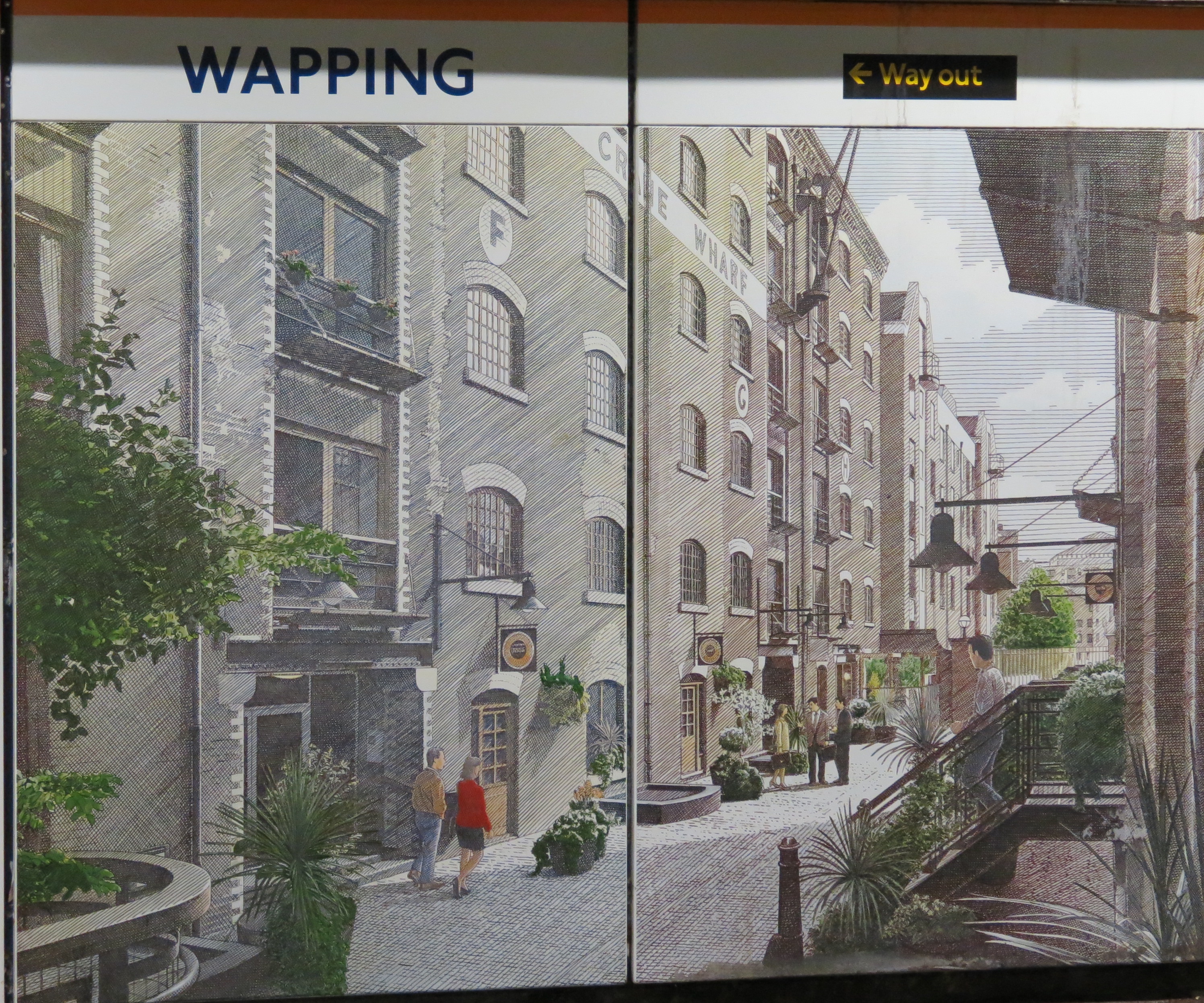
Wapping High Street today, no resemblance to its working life, but
very similar to Shad Thames where we lived in 1988.
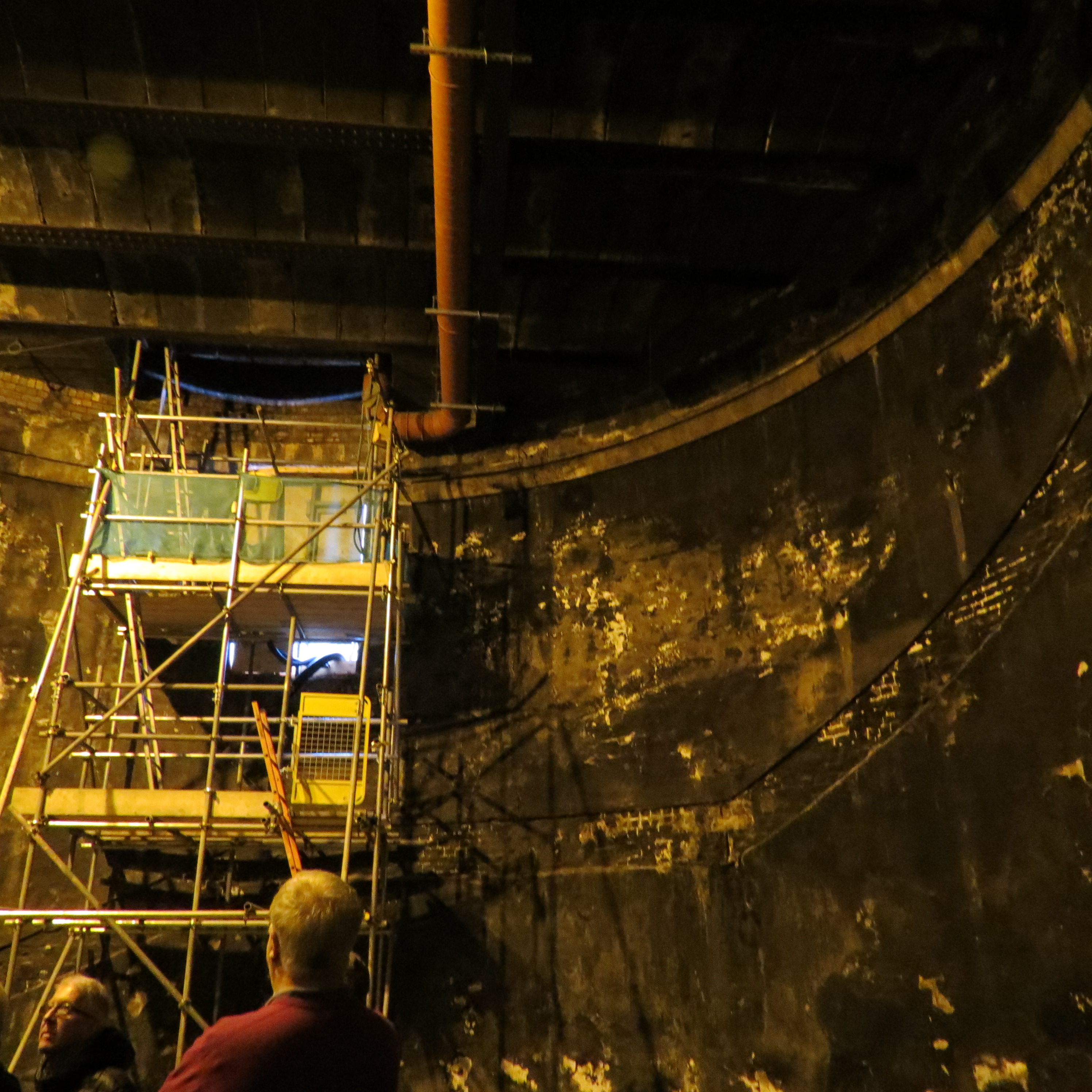
A very small flood proof hatch gives access inside the old Rotherhithe ventilation shaft.
Years of soot build up and the outline of an old stair can be seen on the walls.
A concrete roof was added during the war to prevent German bombs entering the tunnel. When the line was modernised by TfL,
a new floor was added above the rail tracks at the request of the Brunel Society
who are incorporating it into the Brunel Pump House Museum and
making it accessible to the public.

The Brunel Society run Brunel walking tours from Charing Cross underground station. The walk includes a TfL boat trip down the Thames and through the remains of IKB’s 1845
Hungerford Suspension Bridge, (The chains of which went to build
the IKB Clifton Suspension Bridge in Bristol).
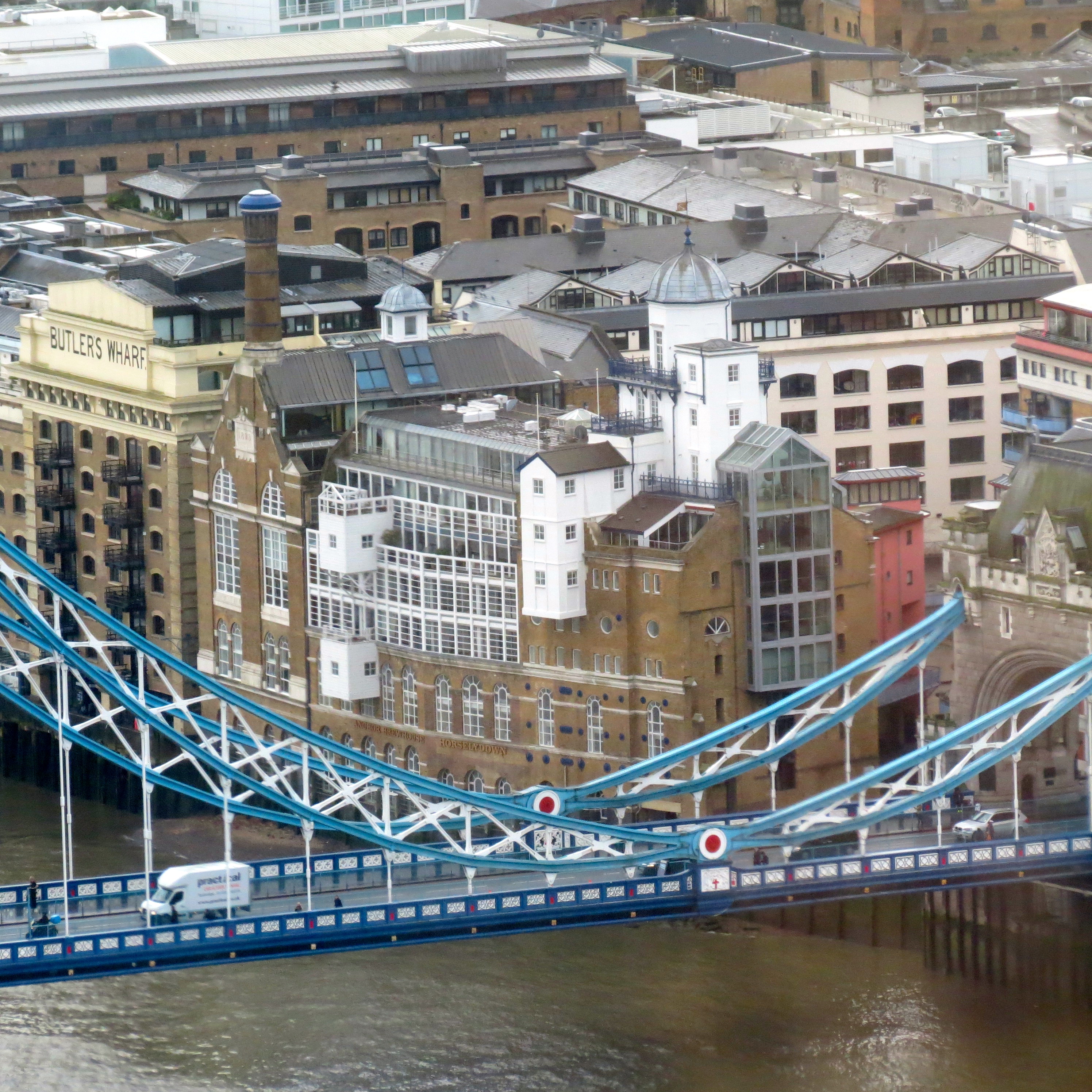
After Hungerford Bridge the boat go,s down river through Tower Bridge where
IKB’s son, Henry was a Structural Engineer.
(The pink building is where Sue and I lived in 1988/9 when
I was working on this redevelopment).
The end of the river trip is at Wapping and the site of the dockyard
where IKB’s Great Eastern, was built.
We then took a short TfL train ride through
The Thames Tunnel to the Rotherhithe Shaft.

When built in 1858 the Great Eastern was the worlds
largest ship, it was over twice the size of the SS Great Britain.
We completed our visit to East London with lunch in
“The Mayflower”.
This riverside pub is just over the road from the Rotherhithe shaft and museum.
The Mayflower is the point where the Pilgrim fathers set sail
to the New World via Plymouth.
It is also the only Pub in the UK where a US postage stamp can be bought.